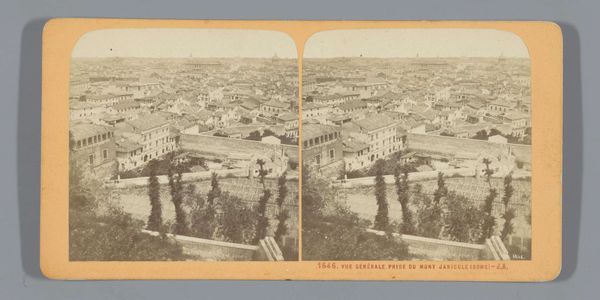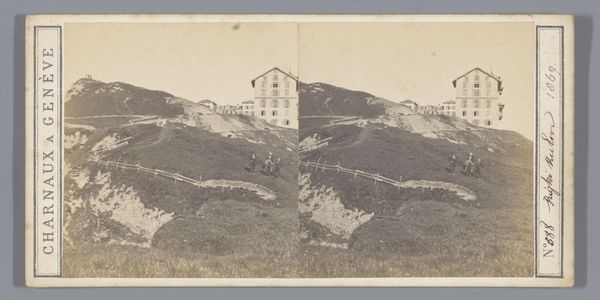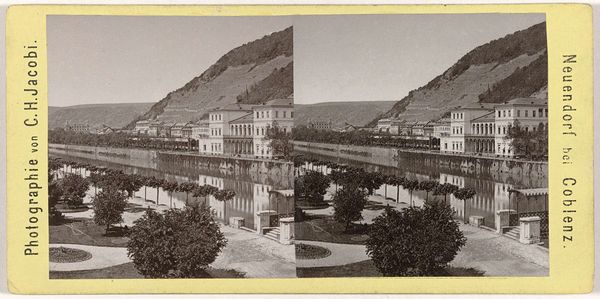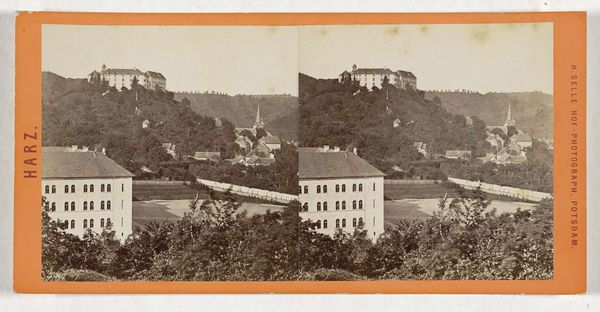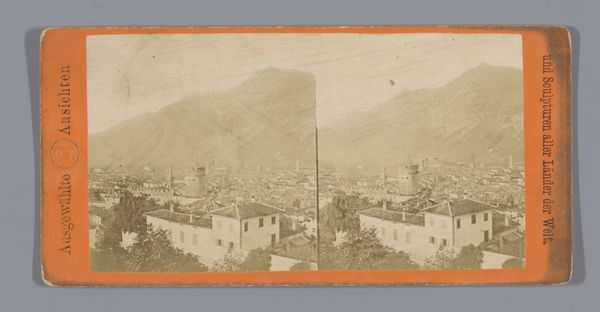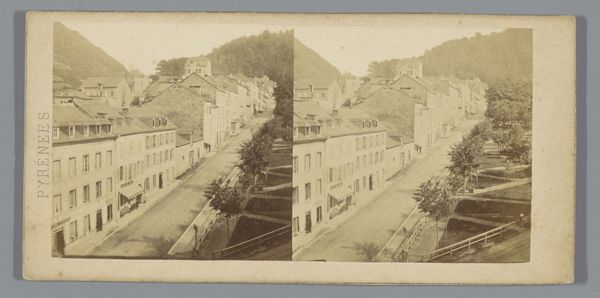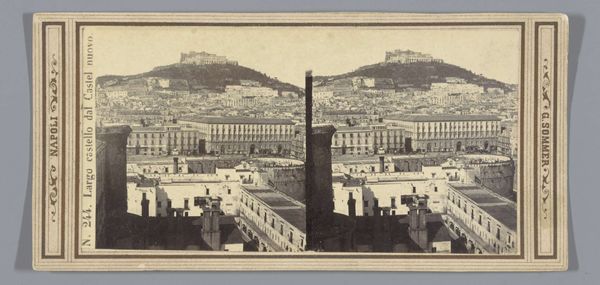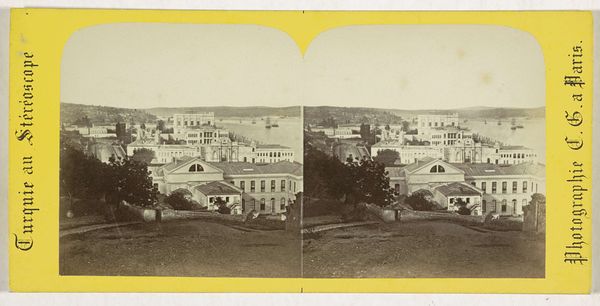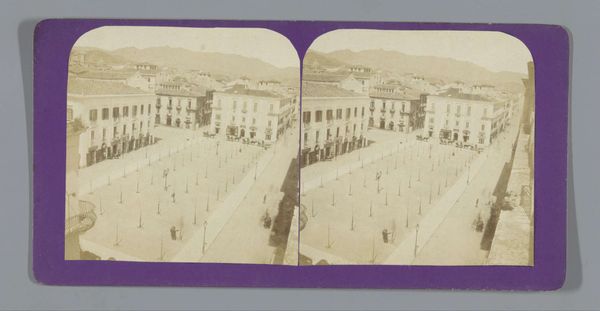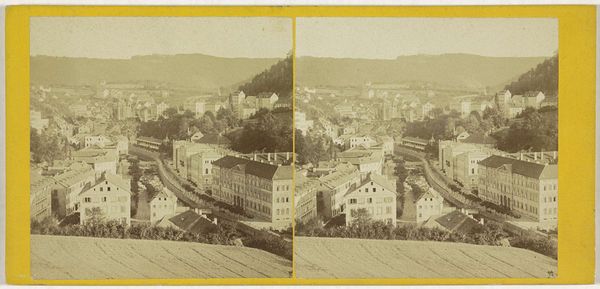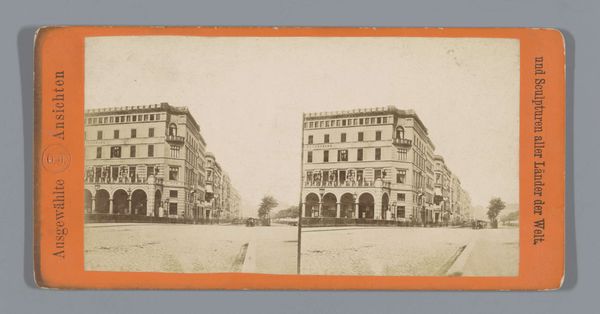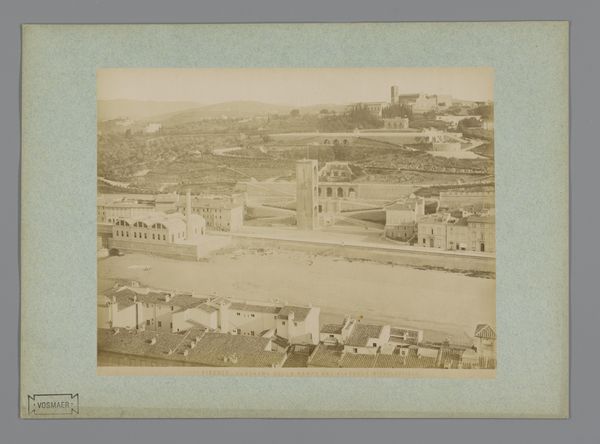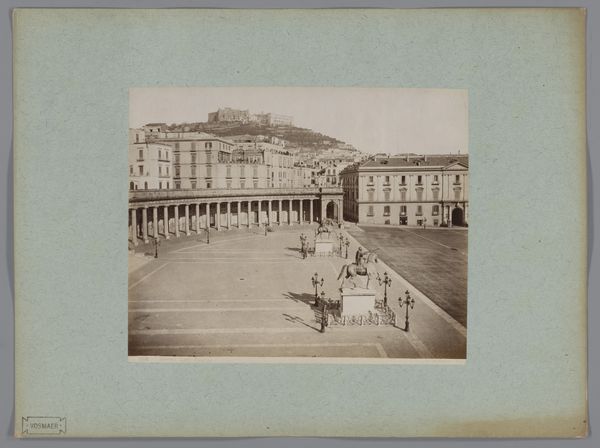
daguerreotype, photography
#
daguerreotype
#
photography
#
cityscape
#
realism
Dimensions: height 85 mm, width 170 mm
Copyright: Rijks Museum: Open Domain
Curator: Before us is an 1857 daguerreotype by Eugène Sevaistre titled "View of the Cuartel de Bibataubín in Granada." It presents a striking cityscape. Editor: What I immediately notice is the incredible stillness, despite the clearly urban setting. There's something very deliberate in how every element, even the small figures in the square, are placed within the frame. And it's a stereoscopic image. Curator: The use of the daguerreotype process really enhances that stillness. Consider what the technology signified at the time; this photo freezes Granada in a very specific, historically charged moment, evoking earlier Orientalist visualizations of Spain, for instance. Editor: Yes, the sharpness of detail is almost unnerving! It feels as though the material realities of the buildings, the quality of light, are meant to convey tangible experience. It also shows labor involved in producing such images. This level of clarity surely was a considerable feat. Curator: The composition seems incredibly important, directing our eye along very specific axes. Take the bare trees for example – how might we consider those branches reaching into the space to connect to something in the cultural memory that existed before the camera? The photograph is a mirror reflecting much more than surface appearance. Editor: Precisely! And thinking of that labor involved... this wasn’t a simple snapshot. It required time, both in terms of exposure and physical setup. You've got buildings and the military square itself; this location and how Sevaistre captured it were strategic choices for displaying progress, access, and, consumption by privileged viewers. The social meaning is inseparable from the scene itself. Curator: Indeed. By meticulously recording it, Sevaistre preserves and transforms Granada for an age that never even knew it. Editor: And by capturing a specific vantage point with these new tools, he provides a controlled consumption for many that will never arrive there themselves, no? An important lesson in who gets to see what! Curator: Looking at it now, so removed from its context, what meanings do *we* now make? The cultural significance of photographs persists beyond what could be known at its making, I think. Editor: I concur. And that significance is materially shaped, distributed, and consumed through those same technologies we see deployed here to begin with! Curator: It leaves one wondering about all that went into making a view, and how symbols persist despite ever-changing landscapes. Editor: I'll never see it the same, I guess! The physical creation, the viewing practices… It's more than meets the eye.
Comments
No comments
Be the first to comment and join the conversation on the ultimate creative platform.

